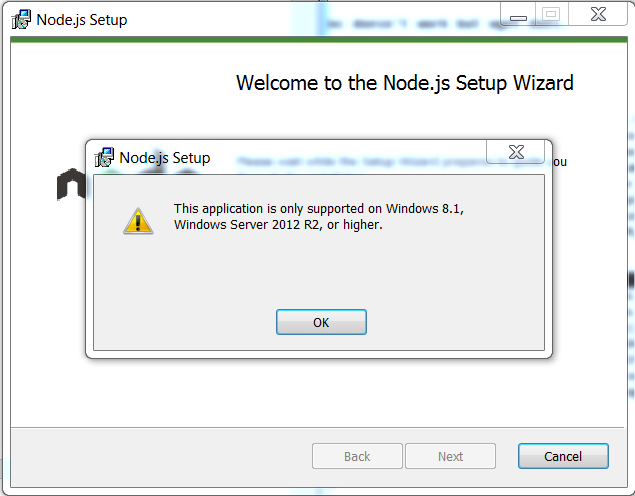
After downloading the latest installer, run it to start the installation. The simple and easiest way to update Node.js and NPM is to download the latest version from its official download page. Step 4 – Update Node.js and NPM on Windows You should see the installed version of Node.js and NPM in the following screen: You can also verify the NPM version using the following command: npm -v To verify the installation, open your Windows command prompt and run the following command to verify the Node.js version: node -v Step 3 – Verify Node.js and NPM InstallationĪt this point, Node.js and NPM are installed in your system. Step 8 – Click on the Finish to exit the setup wizard. Once the installation is finished, you should see the following screen:

Step 7 – Click on the Install button to start the installation. Step 6 – Check “Automatically install the necessary tools” and click on the Next button. Step 5 – Accept the default components and click on the Next button. Step 4 – Provide your desired location or leave it default and click on the Next button. You will be asked to choose the Node.js installation location as shown below: Step 3 – Accept the license agreement and click on the Next button. Step 2 – Click on the Next button to continue with the installation. Step 1 – Double click on the downloaded installer file to start the installation. You can install the Node.js and NPM by following the below steps: Step 2 – Install Node.js and NPM on Windows Once the download is completed, you can proceed to install the downloaded installer to your system. At the time of writing this article, the latest version of Node.js is 14.15.


How to Install Node.js and NPM on Windows 10.You can specify all your projects dependencies in your package.json file then just run npm install command to install all dependencies. Generally, it is used for automated dependency and package management. NPM also know as a “Node Package Manager” is an online repository for developing and sharing JavaScript code. It is a cross-platform designed to build fast and scalable back-end applications.

Node.js is a JavaScript runtime environment used to run JavaScript code on the server-side.


 0 kommentar(er)
0 kommentar(er)
